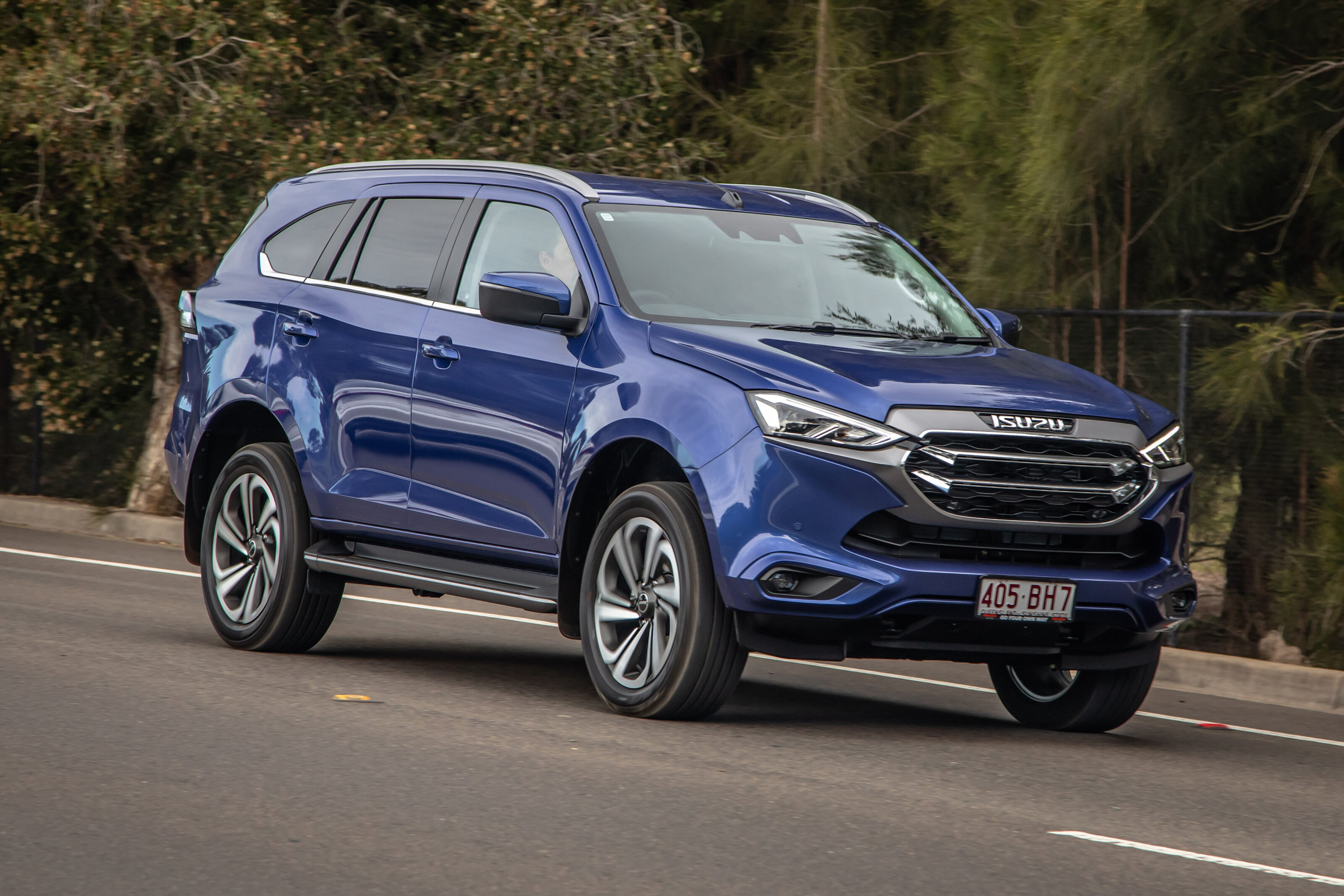Score breakdown
Things we like
- Flexible all-terrain capabilities
- Smart and practical seven-seat functionality
- Fully loaded with kit and safety
Not so much
- Powertrain lacks refinement
- Not particularly upmarket
- Conspicuous ‘truck DNA’ not for all tastes
After the D-Max’s ascent from earth-salted also-ran to Mister Popularity of the dual-cab set, Isuzu Ute hopes that its wagon-bodied technical twin, the second-generation Isuzu MU-X reboot, drinks enthusiastically from the same well of success.
And why not? Properly off-road capable, 3.5 tonnes of braked towing and in localised specification, this seven-seater on stilts appears glove-fit for the pursuit of great Aussie long-haul adventure, family loaded up and caravan hitched.
Thing is, this ladder-framed wagon business doesn’t quite ring with the conceptual clarity of the dedicated ute they’re based on or the urban SUVs they hope to match on practicality. Unless LandCruiser is branded to its rump, go-anywhere passenger propositions can be a tough sell, regardless of bundled, multifaceted talents.
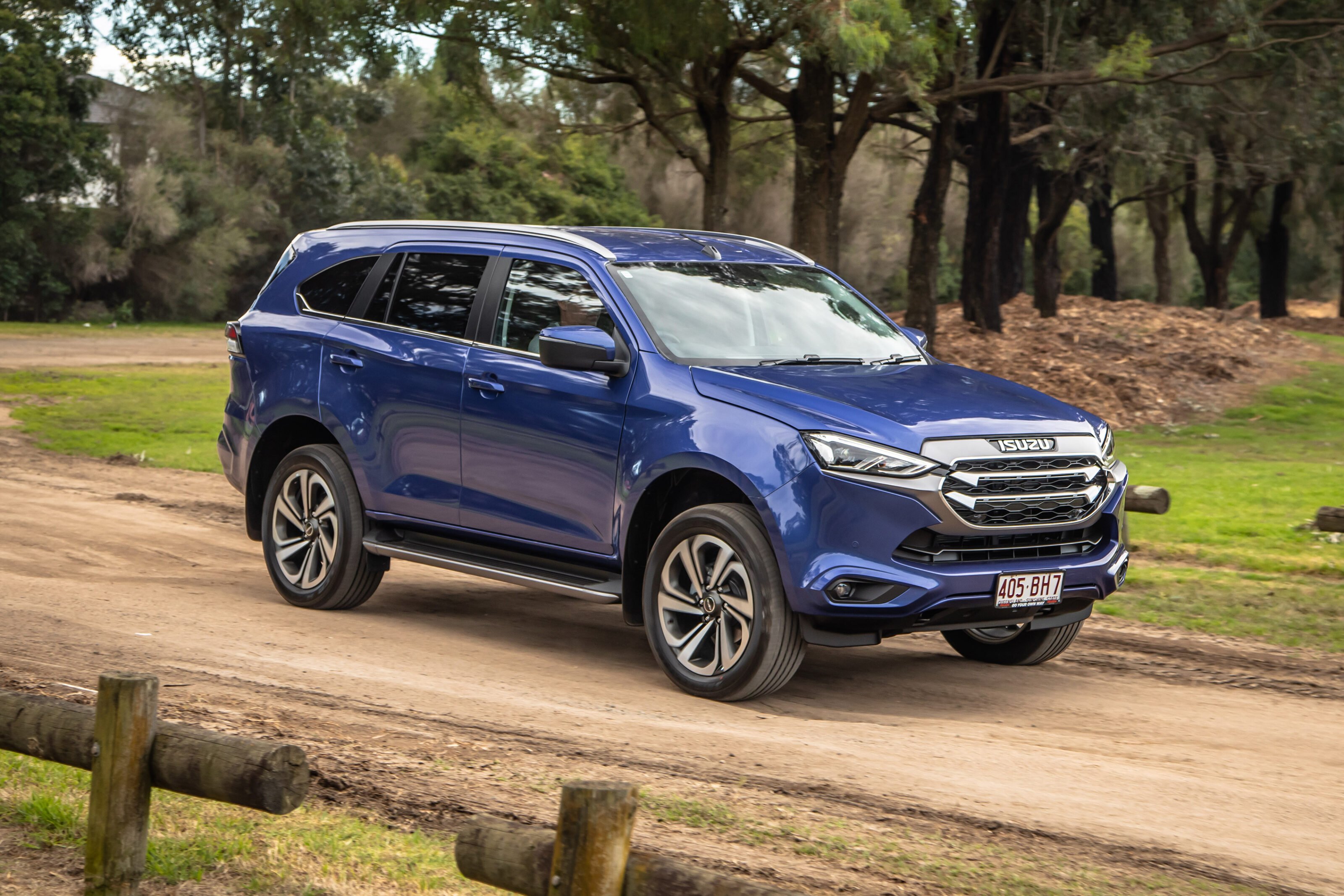
Isuzu’s thrown lots of everything at new MU-X, heavy on safety and off-roading chops, lifts everywhere else from cabin smarts to features count, all with a more upmarket spin, lobbing most lavishly in here in top-spec LS-T 4×4 form that crowns its six-variant range, where either an all-paw or dedicated 4×2 drive can be had in each of three grades, rounded out with the basic LS-M and mid-spec LS-U.
At $65,900 before on-roads, it’s two grand pricier than its logical ute doppelganger, the D-Max X-Terrain, if with not nearly as much nameplate resonance and more formal styling attire.
That’s our all-you-can-eat flagship: opting for 4×2 in any trim chops six grand off the list price in a range entering at $47,900 list for the LS-M. For gen-two’s launch, Isuzu is offering the tree-topping 4×4 at a more seductive $63,990, drive-away.
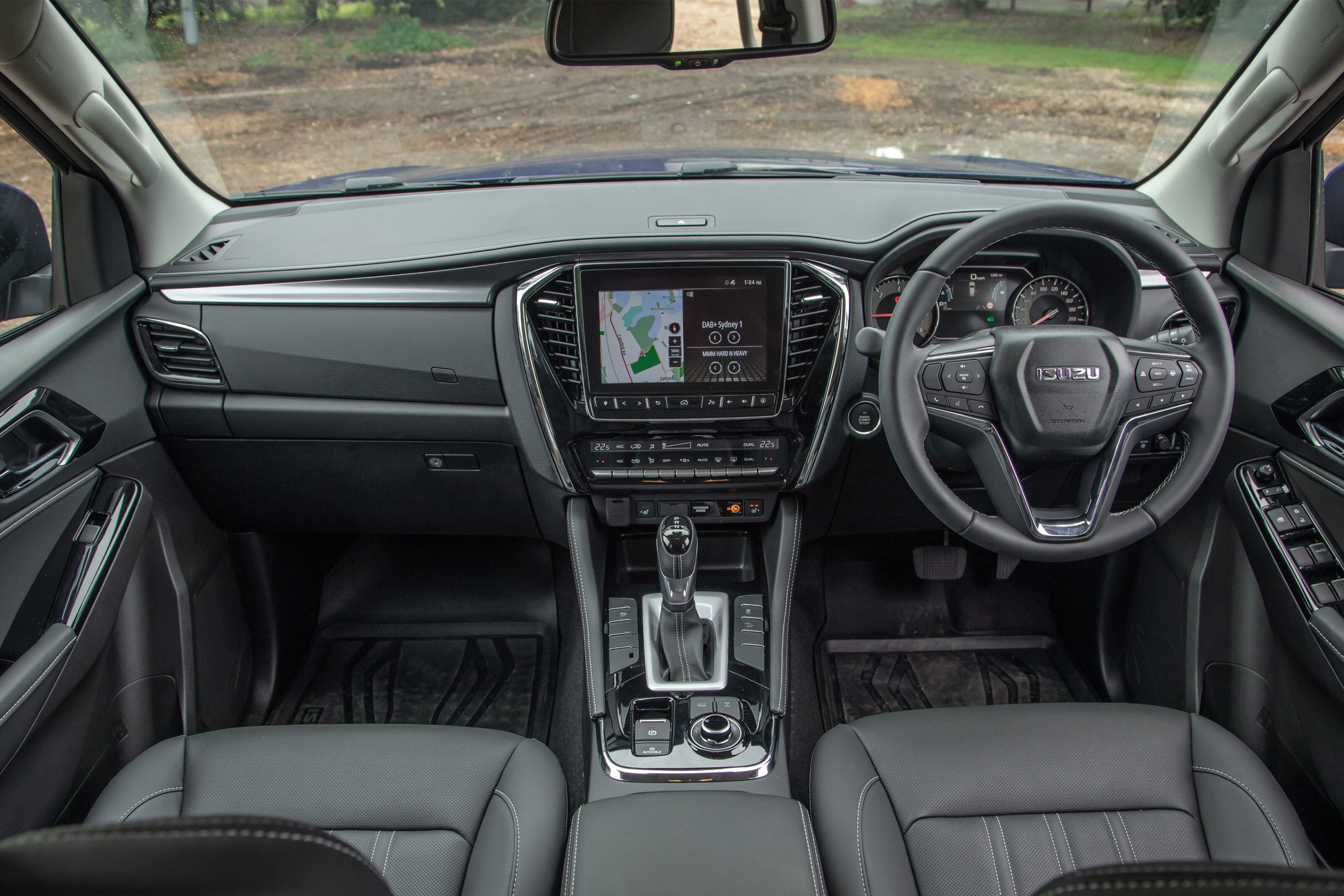
At 30 paces, between its chiseled body lines and tasty 20-inch rolling stock, the new LS-T makes a more dashing entry than its predecessor, a freshened if largely unpretentious spin that ought to warm to the Isuzu fanbase’s somewhat traditionalist tastes.
The brand touts ‘truck DNA’ as a badge of honour, with a penchant for cheap plastics and lower-rent presentation a sort of symbol of hard-working shtick.
The new MU-X is now fancier, if not too fancy pants, though the LS-T looks fetching in our tester’s new Cobalt Blue mica, one of five fresh colours on MU-X’s eight-hue palette. Base and mid-spec variants sit on 17s and 18s respectively.
The new MU-X is now fancier, if not too fancy pants, though the LS-T looks fetching in our tester’s new Cobalt Blue mica
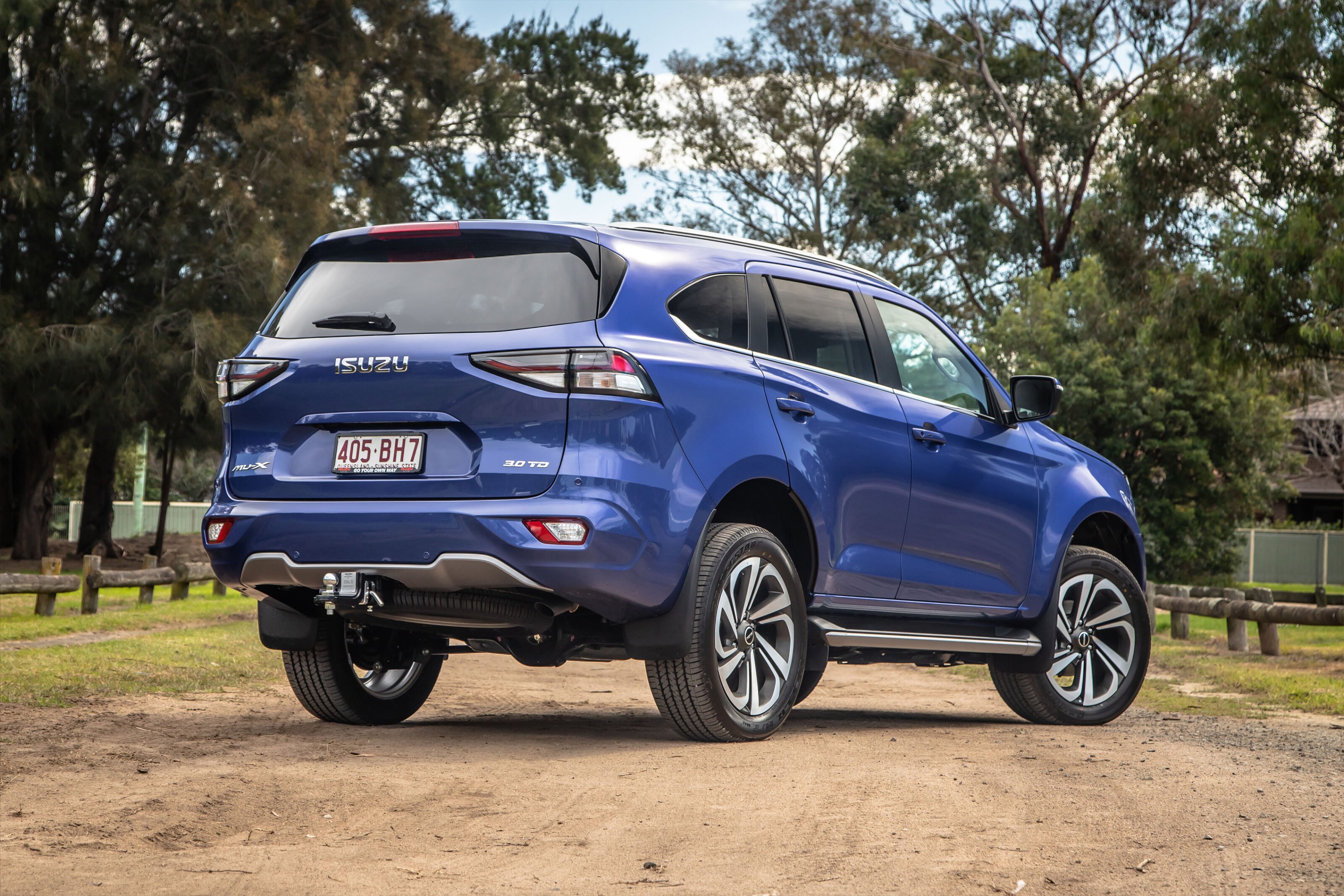
Unsurprisingly, the MU-X spins a vibe that’s worked so well for D-Max: a more contemporary and grown-up character without losing contact, sensory or otherwise, with its underpinning tough-truck soul.
Smoothing out rough edges while not diluting that rough and tumble charm is a tricky balancing act and Isuzu has mostly succeeded, honing out agricultural abrasiveness while shunning overtly cushy pleasantry.
Not that it lacks kit. Bi-LED auto headlights, front and rear parking sensors, adaptive cruise with stop and go and dual-zone climate control is par for the course, with the LS-T exclusively offering those 20-inch wheels, leather-appointment, fully electric and heated front pews, appearance and cabin trim insert upgrades, LED ambient lighting and the novel remote engine start via the key fob.
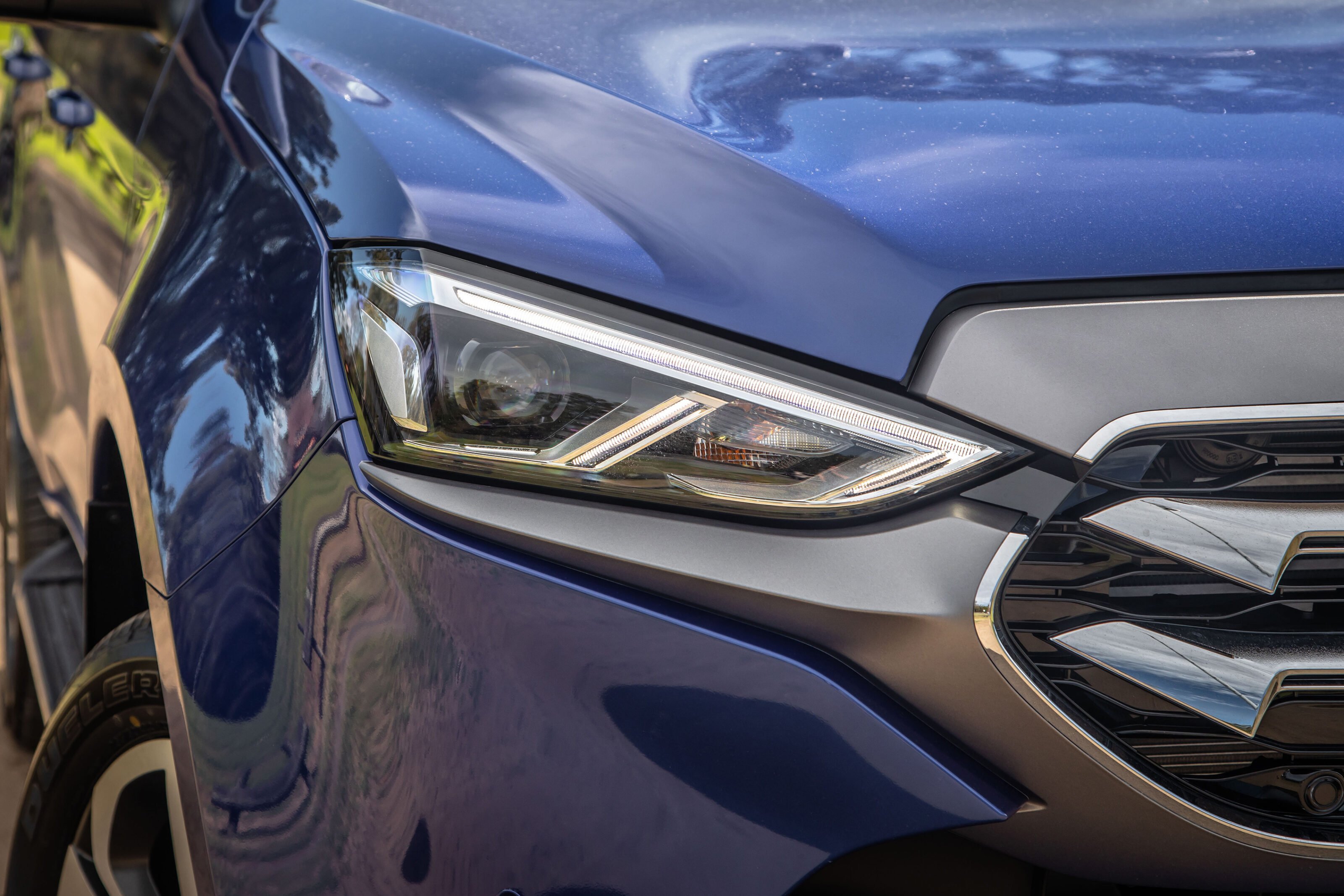
The big 4JJ3-TCX 3.0-litre turbodiesel four plies 140kW at 3600rpm and 450Nm between 1600-2600rpm, some 10kW and 20Nm up on the old ‘TC HI’ unit this has evolved from. New internals, an electronic variable-geometry turbocharger and new direction system list as highlight changes.
It still retains the rattily ruckus of the old engine, unbridled and ever-present, though its flatter and fatter in mid-range torque, with 400Nm available from 1300rpm through around 3200rpm, which serves towing drivability.
It’s MU-X’s least altered area in terms of character, sonically coarse and reluctant to rev much beyond its 3600rpm power peak and demands a bootful to really boogie.
On specific output, it has the measure of Ford Everest’s aging 3.2 five-pot, but it looks downright lazy against its rival’s lean bi-turbo 2.0L four (157kW/500Nm).
It’s still a truck unit at heart, its workmanlike feel somewhat mirrored in the reengineered Aisin-sourced six-speed auto – the only transmission offered – that’s hardly a pillar of enthusiastic cog-swapping or refinement, though there’s something indelible about the powertrain that seems to relish hard grunt work.
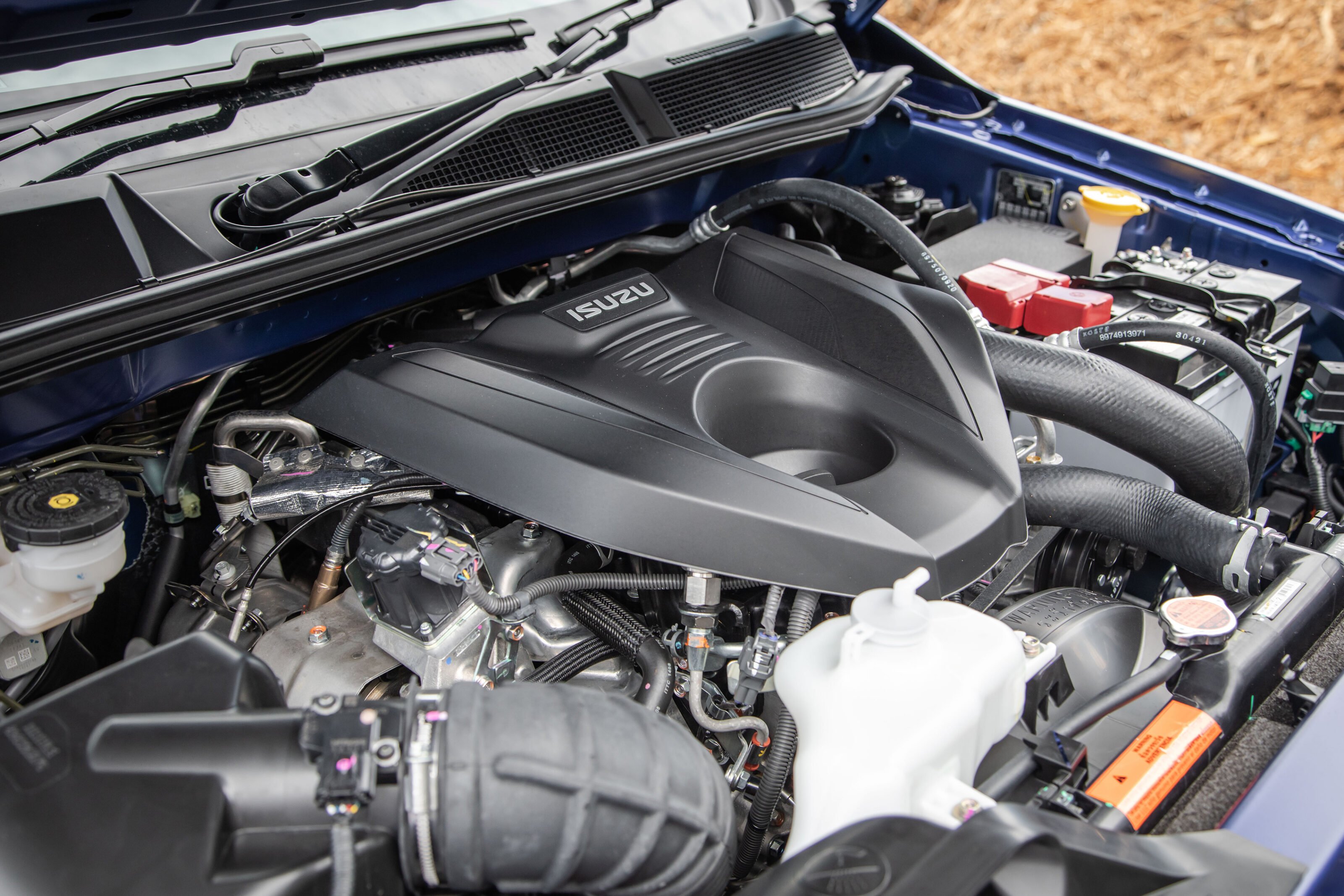
Slicker, though, is the newfound enthusiasm to switch between 2-High and 4-High on the fly at up to 100km/h, which feels as quick as its one-second claim.
Beaten-path credentials are augmented with an electromagnetic-locking rear diff, new Rough Terrain Mode electronic aid and improved approach, departure and ramp-over angles together with improved underbody protection, an increased 800mm wading depth and 235mm of ground clearance.
That is, if you brave pitting those machine-face 20-inch alloys, shod with now-broader 265mm highway-spec Bridgestone Dueler HTs, against the Aussie mulga…
The graded dirt and sealed Tarmac excursions of our local launch experience did demonstrate one on- and off-road highlight: the remarkably accomplished ride quality. The MU-X shares the D-MAX’s ladder frame but fits a coil rather than a leaf rear subframe.
And despite uprated tuning and a beefier five-link rear-end design to facilitate its 3.5-tonne towing capacity, the wagon yields bump compliance and settling rebound far more accomplished and polished than you’ll find in the dual-cab ute arena.
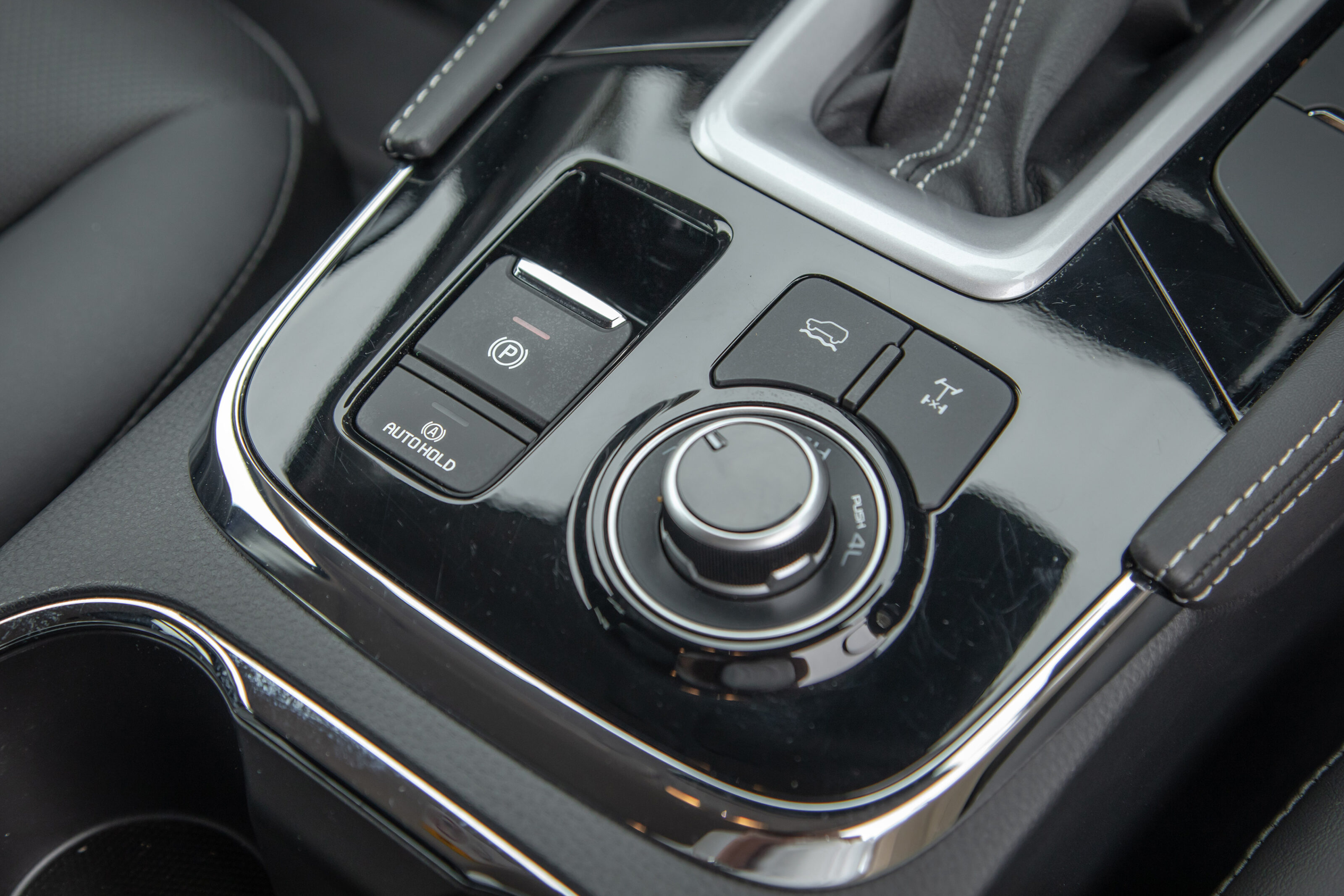
Sure, all things equal, it’d struggle lugging a tonne of bricks in the boot, but with over 625kg of payload a family of seven – or five with a semblance of touring luggage – isn’t going to threaten the bump stops.
At 2175kg it’s no featherweight, though Isuzu has managed to up the GVM (to 2800kg) and GCM (5900kg) of the LS-T 4×4 and there’s improvement throughout the range.
Diesel clatter apart, the MU-X is a comfy open-road cruiser, impressively quiet and planted on its rubber well enough. We also sampled the mid-spec LS-U on its 18-inch 60-series rubber and, indeed, the flagship’s more low-profile 20-inch 50-series tyres do add a crisper edge to the handling and tend to mitigate a touch of the floatiness evident in its range mate.
A larger 80-litre tank and genuine low-sevens highway consumption offers fair-dinkum 1000km single-tank range and our tester nailed its 8.3L combined claim convincingly.
The new MU-X steers nicely indeed, a variable electric system replacing the old hydraulic design, offering a pleasingly light low-speed assistance balanced with a nice, moderate weighting at speed and a genuine sense of connection.
The brake pedal, though, is quite long and squishy, albeit with effective stopping power from the newly upsized (320mm front/318mm rear) four-wheel disc brake hardware.
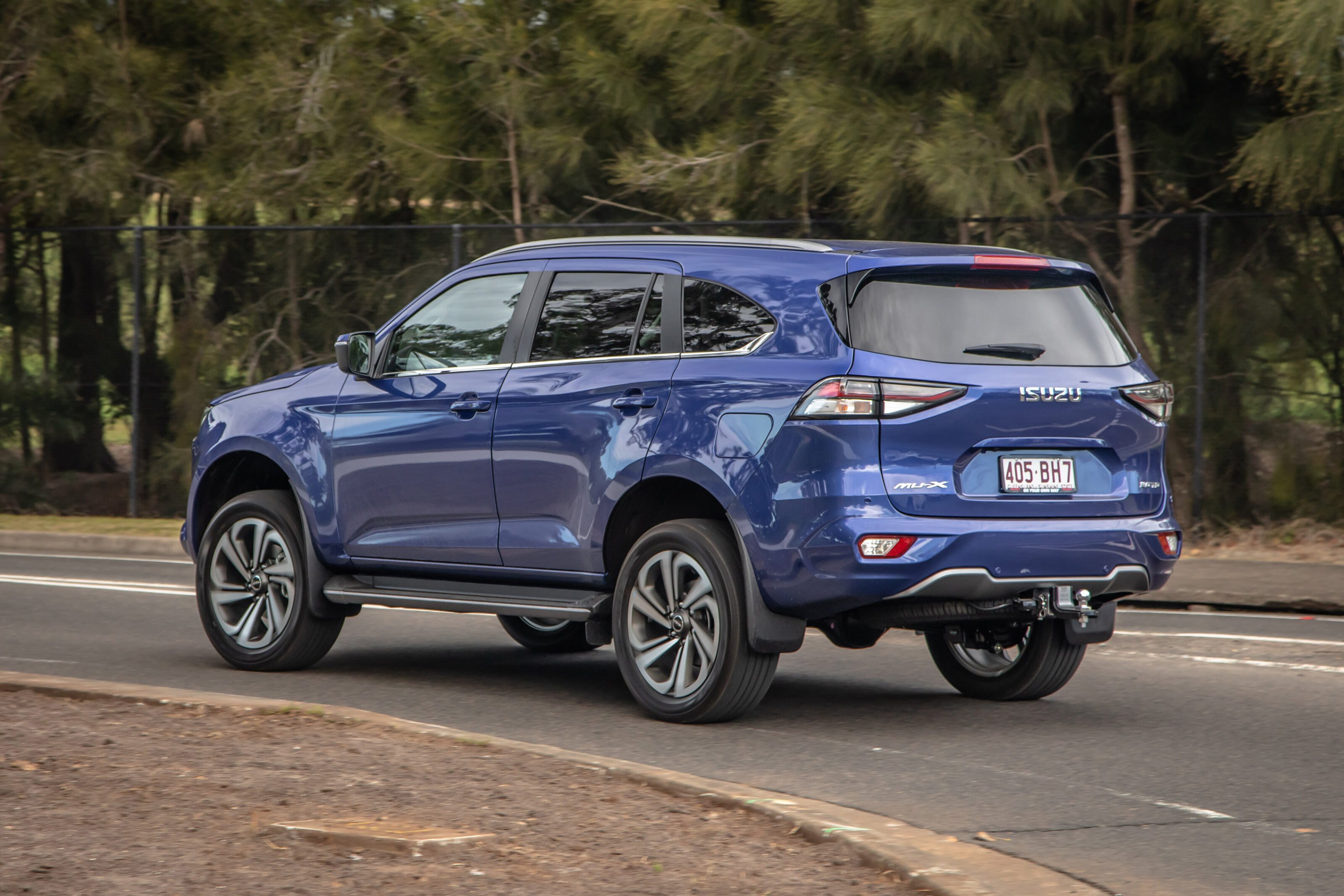
This new second-generation wagon absolutely piles on the safety kit, right throughout its range.
It features turn assist, there are four different functional lane keeping/warning systems in play, and the IDAS suite includes esoteric features such as misacceleration mitigation.
It all mostly works as expected most of the time, if prone to a few small foibles: overbearing lane departure mitigation one moment, absent lane-keeping the next (generally around sweeping corners).
At 4850mm, the MU-X LS-T is considerably shorter than a D-Max and more comparable in dimensions to Mazda’s CX-8. The interior’s a little roomier in key measures than its forebear, smartly packaged through its three rows, with reclining in all seat positions, clever one-touch tumbling in row two for excellent rearmost access, and roof-mounted air ventilation throughout, including rear fan control.
This new second generation wagon absolutely piles on the safety kit, right throughout its range.
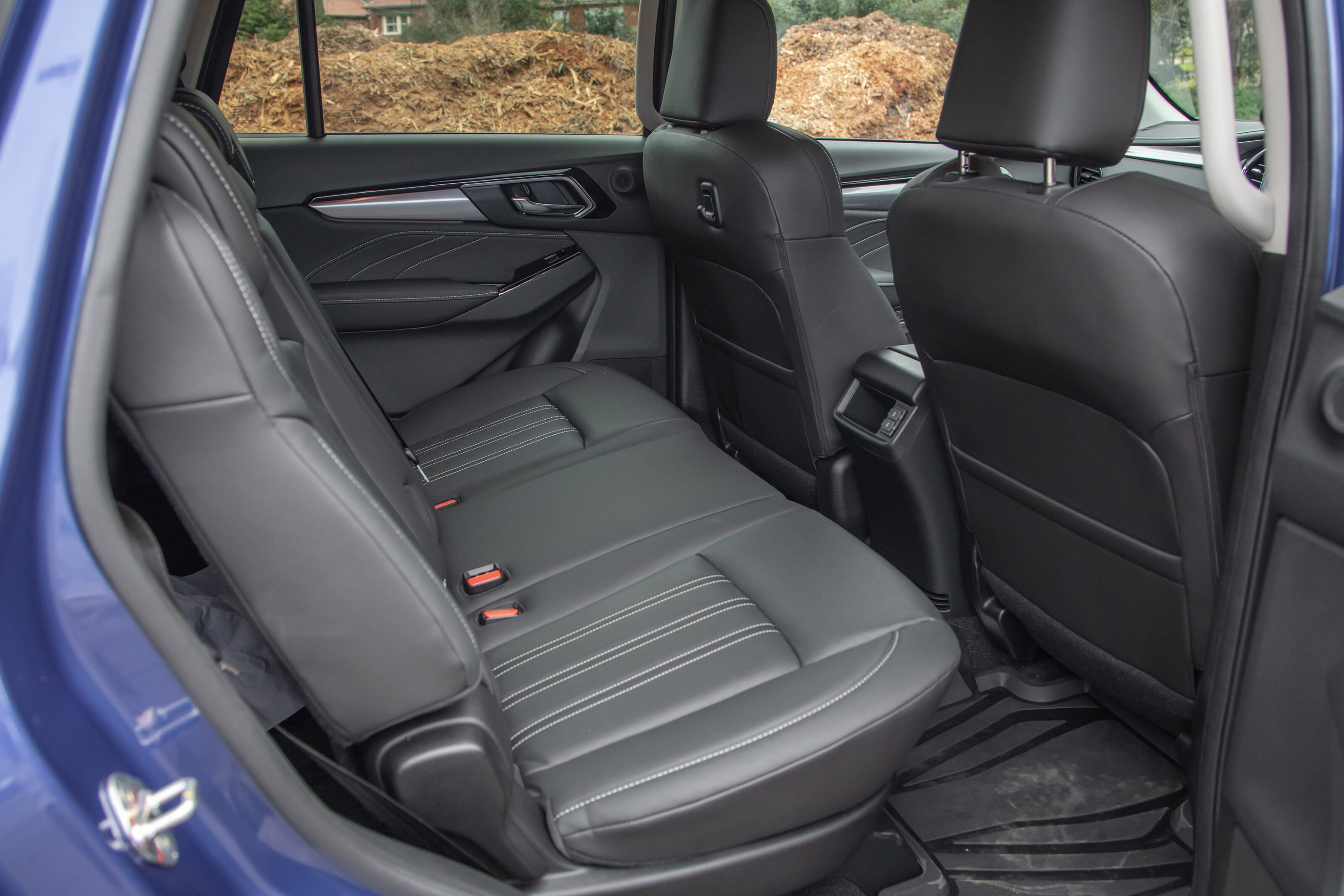
Squint and the cabin design is almost indistinguishable from the flagship D-Max, tidy and presentable if barely masking its ute-derivative nature.
The lion’s share of the materials are more hardy and durable than rich or sumptuous, with a solid honesty to the vibe that’s lean on slick frills that’s no nonsense. It’s quite an improvement for its MU-X breed though there’s little to it that’ll keep Audi designers awake at night.
Seating is fine, with fully electric and heated front buckets that are firmly padded with middling leather appointed trim, and the high seating exacerbates the MU-X’s seemingly high roll-centre. Ditto row two, which suffers a little from exceedingly flat seat contours that won’t offer much long-haul comfort, though extra points go to the off-road grab handles on the A and B pillars.
Row three seating, while measurably roomier than the old MU-X, is still realistically for youngsters and, ahem, vertically modest passengers.
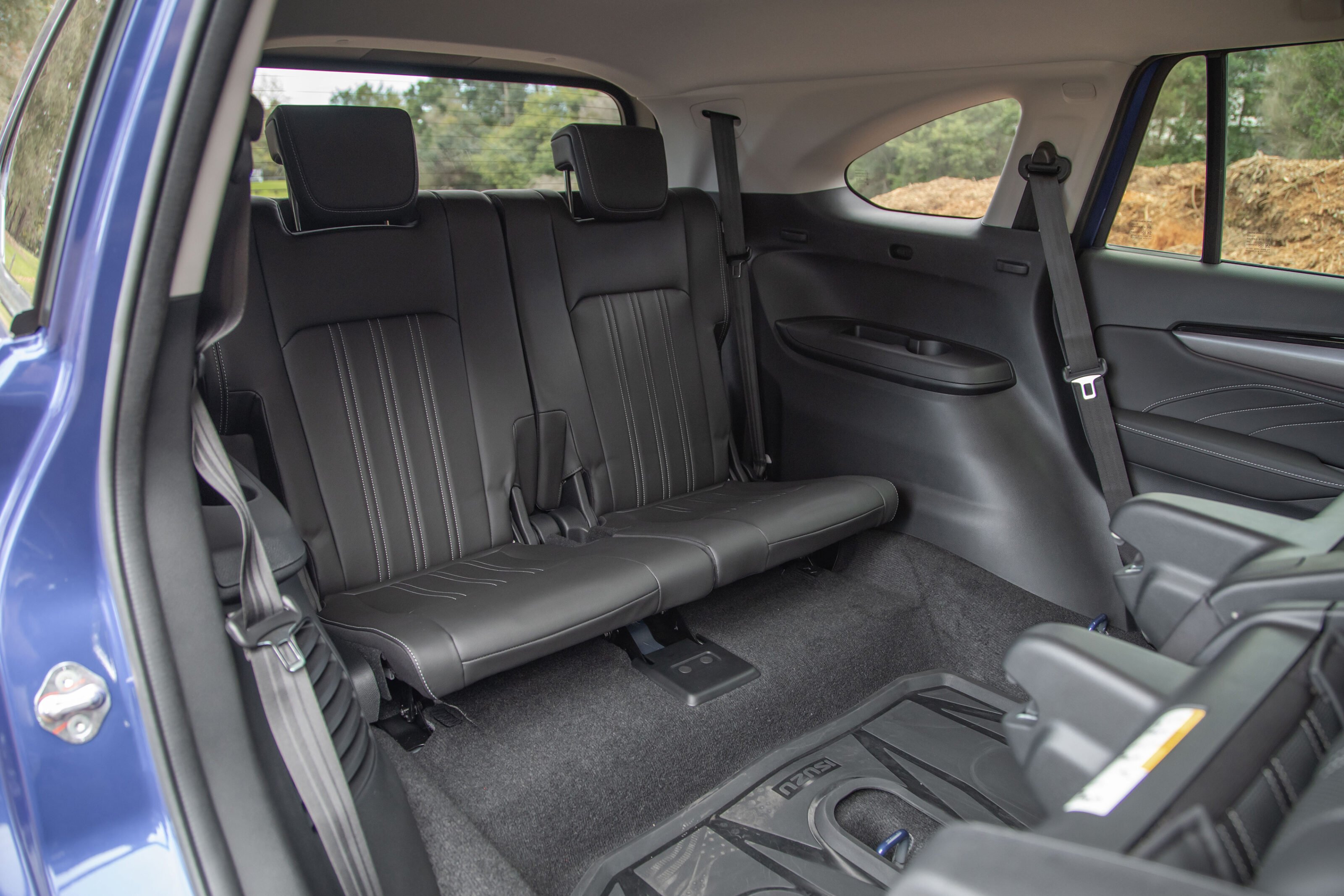
The utilitarian ambience benefits from neat (D-Max mirroring) quirks, such as the dash’s pop-out cupholders and dual-stacked glovebox cubbies.
What the LS-T lacks in fancier frills it compensate for with features and the equipment list is exhaustive even if lacks simple stuff, such as an audio volume knob.
The 9.0-inch touchscreen infotainment isn’t the sharpest or quickest piece of techno eye-candy, but it almost indicative of the MU-X package: loaded with content, low on pretension, if a little clumsy in areas, such as the offset reversing camera making lining up the tow ball unnecessarily awkward.
Wireless CarPlay (and wired Android Auto) is a nice premium inclusion and big ticks for fitting USB ports in the first two rows and 12-volt outlets up front and in the cargo area.
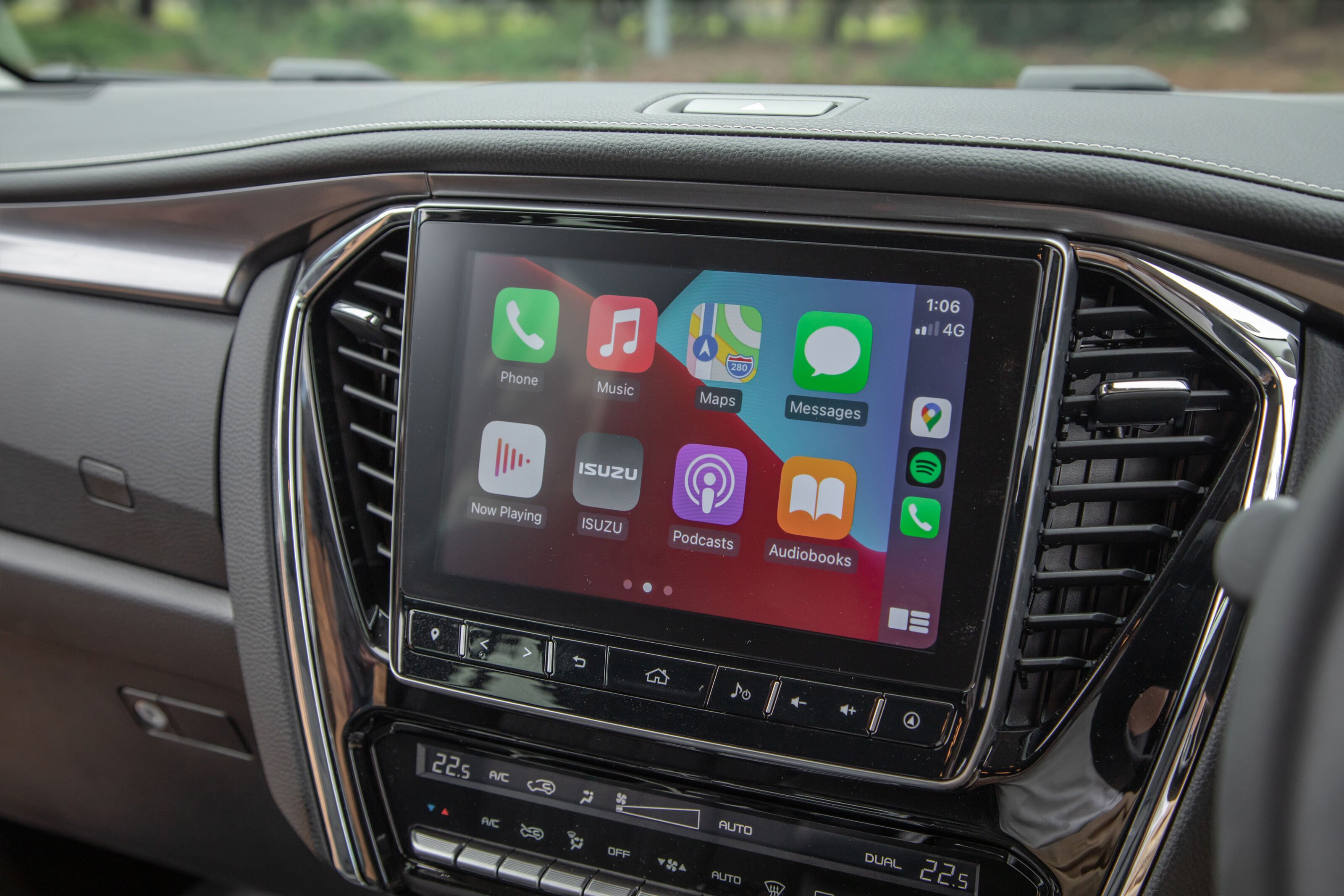
All in all, it’s a genuine family hauler, few corners trimmed and as much spaciousness as a generous mid-sizer allows, with 311 litres of boot space that expands to 1119 litres as a five-seater, with a nice flat load space. It fits eight airbags, too, including full-length curtain coverage, driver’s knee and front-centre units.
The MU-X is covered by six years and 150,000kms of warranty, with seven years of roadside assistance and capped-priced servicing, which requires 12-month/15,000km intervals. Servicing cost vary between $299 and $749 per visit, totaling $3,373 over seven years or an average of just under $482 per year.

Isuzu’s assertion that the new MU-X “changes everything” is a fair stretch for a wagon oh-so-familiar in core areas and largely sticks firm to straightforward roots in the experience.
However, what that take doesn’t credit is that gen-two is measurably better for sheer effort of evolution.
Everything is honed, improved and somehow betters its forebear, more capable and safer without messing with the underlying flavour and formula that, while not to all tastes, remains comfortably homely in its more stylised skin.
The Isuzu MU-X gen-two is measurably better for sheer effort of evolution
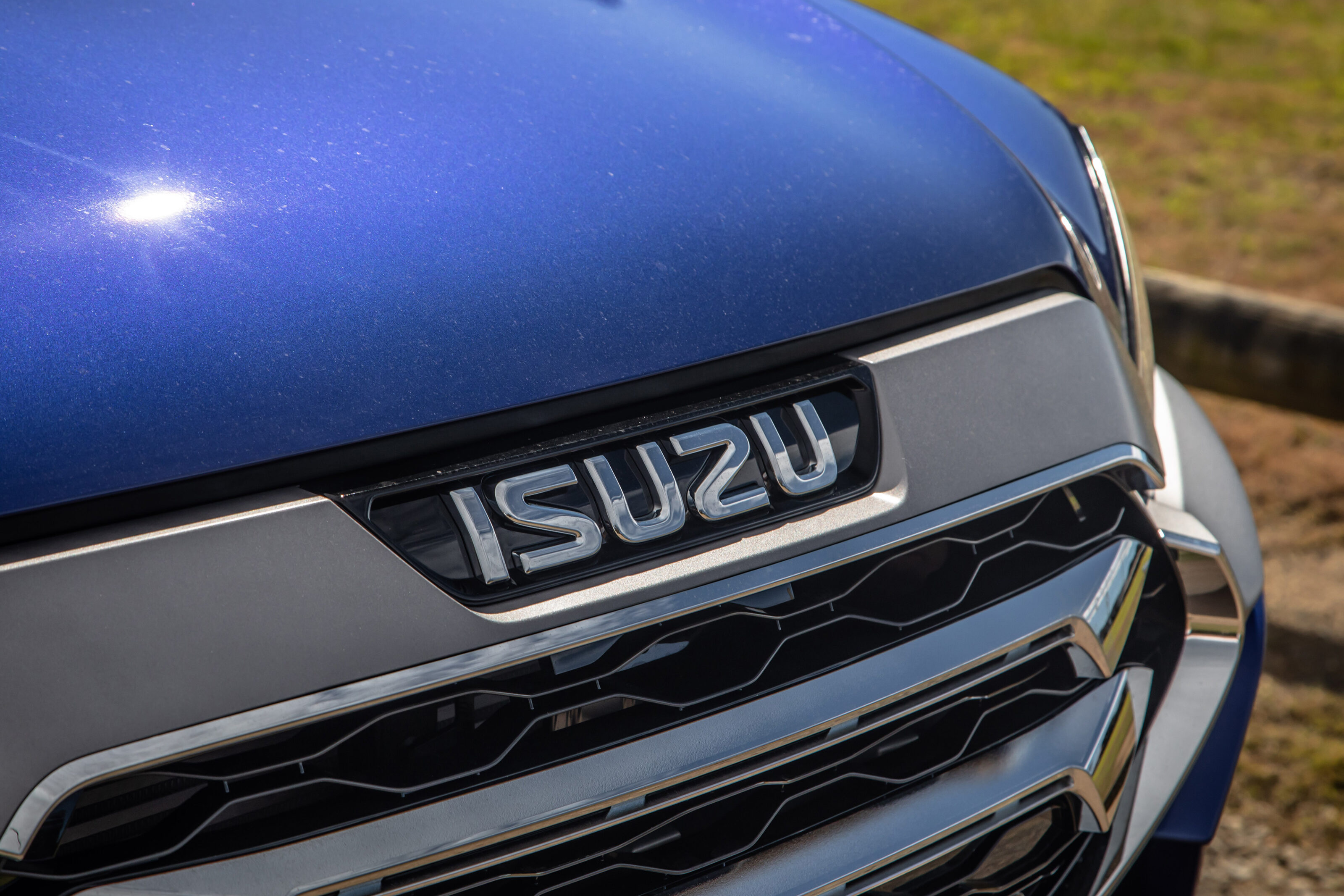
2021 Isuzu MU-X LS-T 4×4 specifications
| Engine | 2999cc, 4cyl, DOHC, 16v, turbo diesel |
|---|---|
| Max Power | 140kW @ 3600rpm |
| Max Torque | 450Nm @ 1600-2600rpm |
| Transmission | six-speed automatic |
| Weight | 2175kg |
| 0-100km/h | N/A |
| Economy | 8.3L/100km (combined claimed) |
| Price | $65,900 + ORC ($63,990 driveaway offer) |
Score breakdown
Things we like
- Flexible all-terrain capabilities
- Smart and practical seven-seat functionality
- Fully loaded with kit and safety
Not so much
- Powertrain lacks refinement
- Not particularly upmarket
- Conspicuous ‘truck DNA’ not for all tastes


